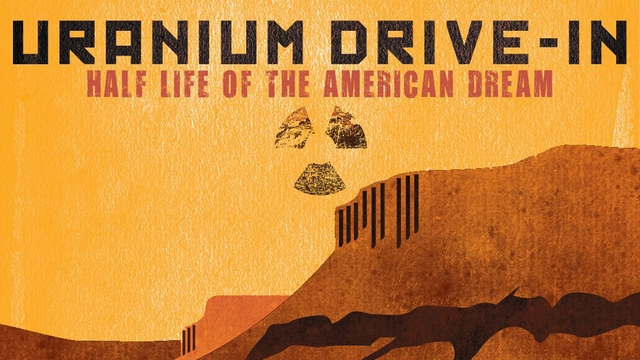Uranium Drive-In
One American town battling to bring back Uranium mining.
 When a ghost-town in Colorado is proposed as the site for America's first new uranium mill in thirty years, the locals couldn't be happier. The promise of jobs after decades of hardship has the community looking towards a recovery of hope. But with a group of environmentalists blocking every step of the way, it soon becomes a battle of people versus planet. Offering no easy answers, this documentary asks who should decide the future of a place?
When a ghost-town in Colorado is proposed as the site for America's first new uranium mill in thirty years, the locals couldn't be happier. The promise of jobs after decades of hardship has the community looking towards a recovery of hope. But with a group of environmentalists blocking every step of the way, it soon becomes a battle of people versus planet. Offering no easy answers, this documentary asks who should decide the future of a place?


 "The mill will give us life again", says one elderly resident of Naturita, Colorado. It's a conviction shared by many here, who recall the town's glory days as the uranium hub that supplied the Manhattan Project. But support for reopening the mines goes beyond nostalgia. Since Chernobyl, when the world lost its appetite for nuclear power, the town - like the radioactive ore on which it is built - has been slowly decaying. "We're still surviving", claims Ayngel, a mother who writes fiction to make ends meet. "But it's just kinda like those last few breaths. We wanna keep breathing."
The promised jobs that were to inject life back into this stricken community have been a long time coming. Held up by lawsuit after lawsuit filed by climate-conscious 'hippies' from a nearby ski-resort, the delay has soured relations with the town's affluent neighbours. "Frustration doesn't even come close to describing how we feel about our lives and our choices being taken away from us", explains one former miner. "And the people complaining the most are driving to the protests in their Mercedes!"
Pitting historic tales of accidents and health hazards against stories of the desperation and poverty of today - lost lives against lost livelihoods - the mill is bringing division not only to the community, but to the hearts and minds of the people themselves. "I often feel deep despair arguing against the mill when it does mean jobs", says Jennifer Thurston, a campaigner for the Sheep Mountain Alliance. "You know, it does torment me." But - as everyone here is all too aware - when it comes to deciding the future of their town, they can't have their yellowcake and eat it too.
LEARN MORE.
"The mill will give us life again", says one elderly resident of Naturita, Colorado. It's a conviction shared by many here, who recall the town's glory days as the uranium hub that supplied the Manhattan Project. But support for reopening the mines goes beyond nostalgia. Since Chernobyl, when the world lost its appetite for nuclear power, the town - like the radioactive ore on which it is built - has been slowly decaying. "We're still surviving", claims Ayngel, a mother who writes fiction to make ends meet. "But it's just kinda like those last few breaths. We wanna keep breathing."
The promised jobs that were to inject life back into this stricken community have been a long time coming. Held up by lawsuit after lawsuit filed by climate-conscious 'hippies' from a nearby ski-resort, the delay has soured relations with the town's affluent neighbours. "Frustration doesn't even come close to describing how we feel about our lives and our choices being taken away from us", explains one former miner. "And the people complaining the most are driving to the protests in their Mercedes!"
Pitting historic tales of accidents and health hazards against stories of the desperation and poverty of today - lost lives against lost livelihoods - the mill is bringing division not only to the community, but to the hearts and minds of the people themselves. "I often feel deep despair arguing against the mill when it does mean jobs", says Jennifer Thurston, a campaigner for the Sheep Mountain Alliance. "You know, it does torment me." But - as everyone here is all too aware - when it comes to deciding the future of their town, they can't have their yellowcake and eat it too.
LEARN MORE.
WATCH MORE.
JOIN THE DISCUSSION.
 Official Selection, Big Sky International Film Festival 2014
Official Selection, Big Sky International Film Festival 2014
 Winner, Documentary Excellence Award, St Louis International Film Festival 2013
Winner, Documentary Excellence Award, St Louis International Film Festival 2013
 Winner, Best Feature Film, Arica Nativa Film Festival Chile 2013
Winner, Best Feature Film, Arica Nativa Film Festival Chile 2013
 Official Selection, DOC NYC Film Festival 2013
Official Selection, DOC NYC Film Festival 2013
 Official Selection, United Nations Association Film Festival 2013
Official Selection, United Nations Association Film Festival 2013





